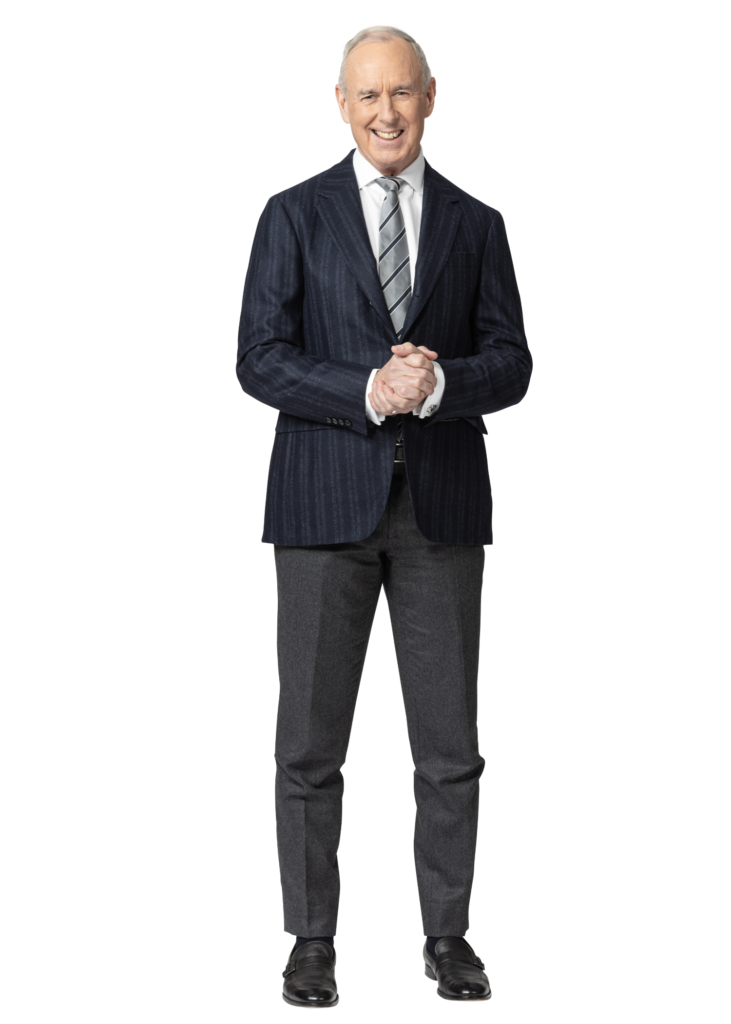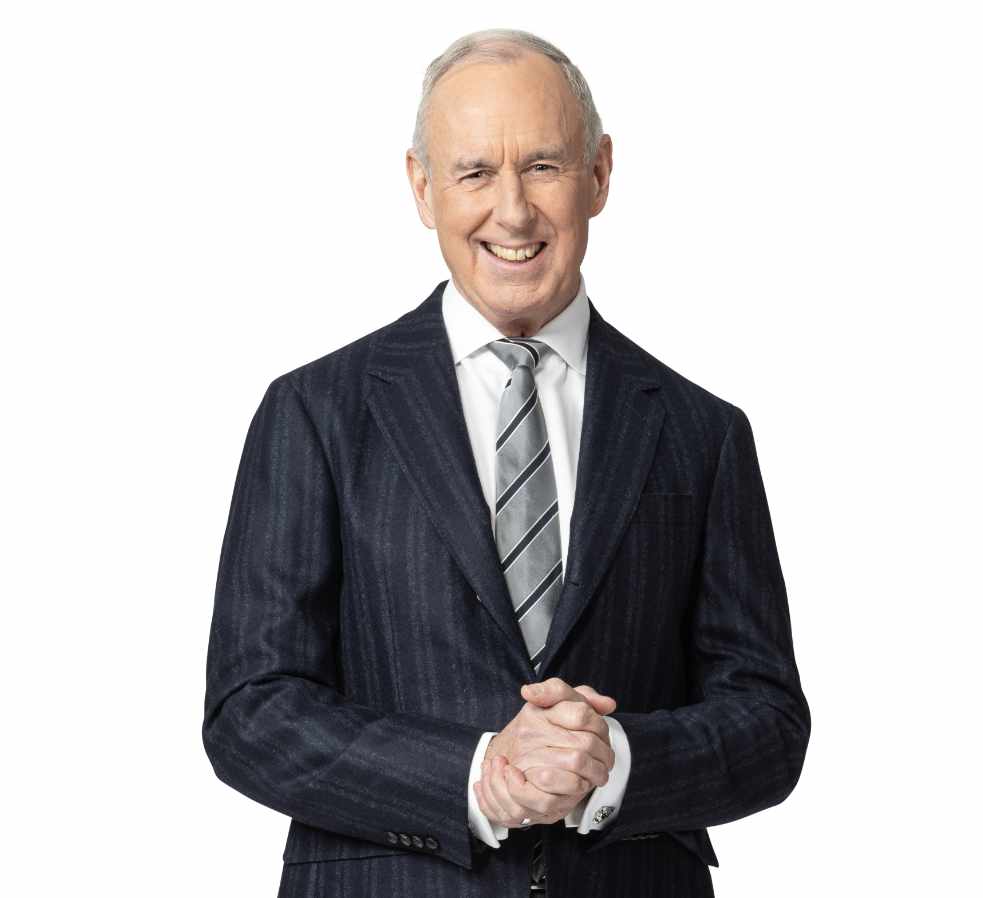This piece originally appeared in our newsletter, “Carnegie Corner,” Issue No. 8.
Ron MacLean is a Canadian icon and a multiple award-winning sports broadcaster, best known for his role on “Hockey Night in Canada” in addition to his quick wit and encyclopedic knowledge. He is a ten-time Gemini Award winner and two-time George Gross Award recipient, honouring excellence in sports broadcasting, and was inducted into Canada’s Walk of Fame in 2015.
He serves on The CI’s Board of Directors.
CI: How do you feel about the present state of hockey in regard to diversity and inclusion?
RM: Some wonderful work has been done for decades and recent growth is clearly visible. Herb and Bernice Carnegie’s Future Aces, Bob Dawson writing for Boxscore World Sportswire, which resulted in his work with Dr. Courtney Szto, Sam McKegney, Michael Mahkwa Auksi on a “Policy Paper for Anti-racism in Canadian Hockey” published in 2019. Renee Hess (Black Girls Hockey Club), Chante and Anthony Stewart’s (Hockey Equality), Cyril Bollers (Hockey is For Everyone), Akim Aliu (Hockey Diversity Alliance), NHL/NHLPA Hockey Inclusion Coalition, Rose Power’s Sport a Rainbow, Marian Jacko (The Little Native Hockey League), Hockey Cares (True North Aid), and of course The Carnegie Initiative. That’s just a dozen groups lighting the way … the resources are bountiful, the possibilities beautiful.
CI: Can “Hockey Night in Canada” be a driver in helping to make hockey more diverse and inclusive?
RM: The simple answer is yes. However, a mix of digital, social media, A.I. means we no longer turn to a national show or newspaper to inform our motives. Information is fragmented. I recall Ta-Nehisi Coates in his book, “Between the World and Me” trying to reckon with a crisis of history, and a vision for a way forward. Ta-Nehisi wrote, “I had come looking through books for a parade, a military review of champions marching in ranks. Instead, I was left with a brawl of ancestors, a herd of dissenters, sometimes marching together, but just as often marching away from each other.”
Bernice Carnegie has always been careful not to exclude the messenger who may be mired in a righteous indignation which is off-putting to the corporate ways, yet vital to the conversation. I think that’s a critical awareness. I know Desmond Cole in his book “The Skin We’re In” discusses that notion of homogenous thinking becoming somewhat impossible by showcasing the differences in the work of Martin Luther King Jr. and Malcolm X.
CI: Do you feel a sense of responsibility regarding educating the hockey-watching audience?
RM: Here’s another brilliant book that addresses advocacy. Bryan Stevenson’s “Just Mercy.” Bryan was a lawyer who represented prisoners on death row. One of the things that gave him inspiration was a simple chat with a parent of a person in jail. The parent said, “Bryan, just remember, you have people who are loved in your care.” Bryan opens the book with a quotation from Reinhold Niebuhr, “Love is the motive, but justice is the instrument.” I love the game, have players who are loved in my care. Hence, I must strive for justice.

CI: Was there a particular instance in your life you recall as the moment you fell in love with hockey?
RM: My father was in the Air Force, stationed in Whitehorse, Yukon. When I was 4 or 5 a neighbour came and invited me to skate on a backyard rink across the street. He came with a pair of bob-skates (double blade runners on each boot) and although my skating was Bambi-like, the setting, fresh outdoor ice, flood lights, hockey nets and boards, it felt like Disneyland. The neighbour was Dwight Riendeau and the rink belonged to the Clement Family (Alphonse and Pauline). You don’t forget the ones who clear the runway for your takeoff.
CI: What are the most immediate challenges The CI must focus on to see more progress in making the sport more inclusive and welcoming to all?
RM: Everything is opportunity. The CI was a fine partner to the PHF and now the PWHL represents a great avenue for growth, so we will want to support them. Our Summits bring together stakeholders and that is what Hockey Canada is endeavouring to do. Working with National Sport Organizations will be important. And as Bryant McBride said from the outset, “We need to be a clearing house where all parties convene and are made accountable.” We must keep the rogue warriors invested with us.
CI: What are you reading at present, and what book(s) would you recommend for others involved in making hockey more inclusive and accepting?
RM: Well I will just do Top 10 (Herb’s “A Fly in a Pail of Milk” is our manifesto so that is not on list) – 1) “Frederick Douglass Prophet of Freedom” – David W. Blight; 2) Ta-Nehisi Coates – “Between the World and Me;” 3) Janie Victoria Ward – “The Skin We’re In” a different book than Desmod Coles.’ Lays out an action to confront racism; 4) Bernie Saunders and Barry Meisel – “Shut Out;” 5) Bryan Stevenson – “Just Mercy;” 6) Chanel Miller – “Know My Name;” 7) Tom Bartsiokas and Corey Long – “Angela James;” 8) Barack Obama and Bruce Springsteen – “Renegades;” 9) Cecil Harris – “Breaking the Ice;” 10) William Humber – “A Sporting Chance”
